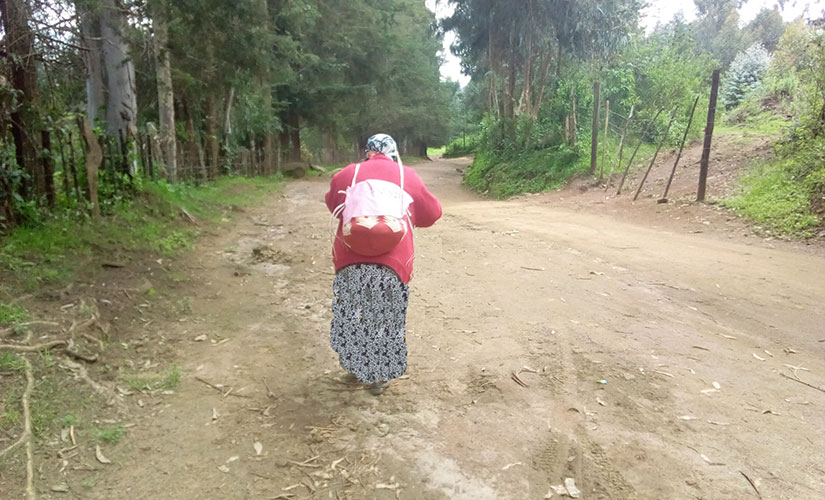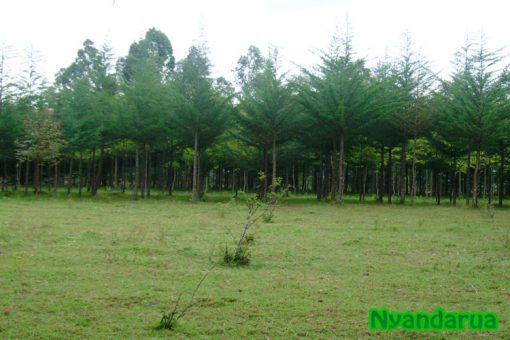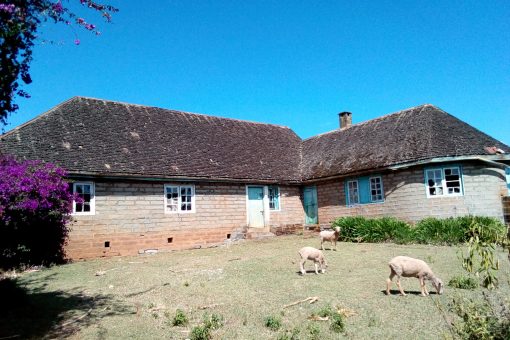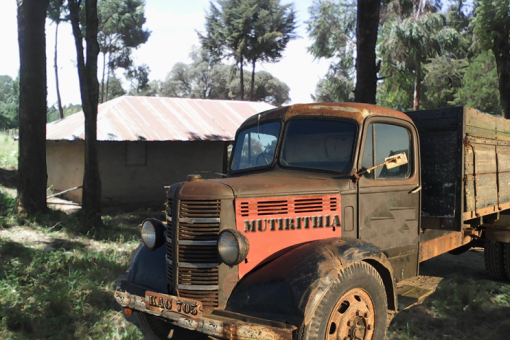Picture for a moment my mother from the Settlement Scheme of OlKalou visiting me in school some 180 kilometers away. Her journey will have started early in the morning, either in rain and mud, or in fine dusty roads.
Her dress with gathers at the waistline (kihuruto) locally made by our very own OlKalou designer, the semi illiterate middle aged Ng’atho. A lightweight pullover sweater (kaburana ga thiinii) is worn on top of the dress to cover the chest area. That was a must for every decent woman because they did not wear brassieres (sindiriya) My mothers generation considered them uncomfortable and unnecessary, and better left for town people. Mothers’ outfit is completed with a heavy sweater, thick enough to wade off the OlKalou cold temperatures. None of her dress items needed to color coordinate. They just needed to be practical, decent, clean and comfortable.
My mothers’ feet were adorned in Bata Ngoma shoes from Jirada’s Bata Shop, either color blue or green. Those were the only two choices available back then. Whatever color of shoes mother had on her feet, you can be sure they were either covered in dried on mud or a fine dust, depending on the weather back home. A headscarf was a must, and like the rest of her clothes, it did not need to color coordinate with anything else. One look at my mother, wearing all the colors of the rainbow and then some, looking like a billboard for Crown Paint, but she walked confidently because she was in her Sunday best (nguo cia kiumia).
Every woman back then, never went anywhere without a Kiondo for carrying their shopping, a change of clothes and anything else they deemed worthy to carry around. On such a school visit, mother will be carrying her favorite sisal bag (Kiondo), not the fashionable kind with two straps that college girls carry on their shoulder walking down the streets of Nairobi. No, no, no, mothers’ is the original Kiondo with multi-colors, a rounded base that can ‘sit’ securely on the floor, two unprocessed leather loops (nganangu) on either side of the kiondo where her one leather strap (mukwa) is attached. Her kiondo is meant to be carried on her back with the strap crossing the top of her head. You know that familiar look of Gikuyu women carrying their Kiondo on their backs, like the lady in the picture above. The brim of her kiondo is covered with an orange tablecloth with an amateurish embroidered flower in the center (gitambaya gia kugemio) a product of my Standard five Home Economics lesson from years past.
The contents of her Kiondo are: a ball of the traditional Kikuyu mashed food (Itaha ria mukimo) nicely rounded having been scooped with a calabash (Kaihuri) when it was freshly mashed the previous day. She will have some pears (ngario) bought on the bus from some roadside vendors in Limuru who hawked them inside the bus. The ultimate treat is a packet of Favorite biscuits (mithigwiti) They came in a bright yellow pack with the picture of a rabbit on the box. They were the cheapest biscuits and that is why she bought them, not to waste too much money on delicacies (mirio).
Compare that visit with the hoopla that is going on next to us with the birthday cake and all. How do you compete with that? How do you feel good about your circumstances in the face of that? I’ll tell you what. You don’t.




